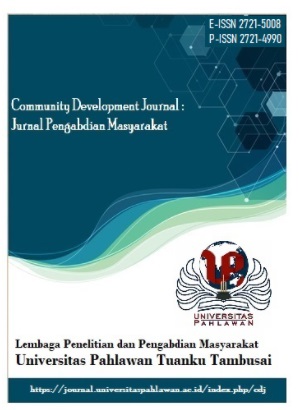LINGUISTIC EXPLORATION OF EXPRESSIVE ILLOCUTIONARY ACTS IN THE MARVEL ACTION MOVIE SPIDER-MAN: ACROSS THE SPIDER-VERSE
DOI:
https://doi.org/10.31004/jrpp.v8i1.43454Keywords:
Tindak Tutur, Tindak Ilokusi Ekspresif, Komunikasi AntarbudayaAbstract
Penelitian ini, yang berjudul “Linguistic Exploration of Expressive Illocutionary Acts in the Marvel Action Movie Spider-Man: Across the Spider-Verse,” mengkaji tindakan ilokusi ekspresif dan manifestasinya dalam komunikasi kontemporer. Tujuan utama penelitian ini adalah untuk mengidentifikasi jenis-jenis tindakan ilokusi ekspresif berdasarkan teori Ronan (2015) dan mengeksplorasi bagaimana tindakan tersebut diaktualisasikan dalam konteks situasi sebagaimana dijelaskan oleh Holmes (2013). Dengan menggunakan metode kualitatif deskriptif, analisis difokuskan pada interaksi karakter melalui dialog film, dengan data yang dikumpulkan melalui metode observasi dan dokumentasi. Hasil penelitian mengidentifikasi delapan kategori tindakan ilokusi ekspresif, yaitu: 4 contoh persetujuan, 15 contoh ketidaksetujuan, 4 contoh kehendak, 7 contoh ucapan terima kasih, 18 contoh permintaan maaf, 7 contoh keluhan tidak langsung dalam bentuk seruan, 5 contoh kesedihan, dan 23 contoh sapaan. Jenis yang paling sering ditemukan adalah sapaan (greeting), yang memainkan peran penting dalam komunikasi antarbudaya. Setiap data dianalisis berdasarkan empat elemen konteks, yaitu partisipan, latar, topik, dan fungsi. Analisis ini menyoroti variasi dalam elemen-elemen tersebut, yang mencerminkan keragaman yang disajikan dalam konsep multiverse.References
Alston, W. P. (2000). Illocutionary Acts and Sentence Meaning. Cornell University Press.
Austin, J. L. (1962). How to Do Things with Words. Harvard University Press.
Bennet, M. J. (2013). Intercultural Communication. IDRInstitute. https://www.idrinstitute.org/resources/intercultural-communication/
Cohen, A. D. (1996). Developing the Ability to Perform Speech Acts. Studies in Second Language Acquisition, 18(2), 253–267. https://doi.org/10.1017/S027226310001490X
Emerson, T. I. (1972). Communication and Freedom of Expression. Scientific American, 227(3), 163–172. https://doi.org/10.1038/scientificamerican0972-163
Firmansyah, F. D. A. (2022). An analysis of expressive speech acts used by the main character of “To Kill a Mockingbird” novel [Islamic University Maulana Malik Ibrahim].
Holmes, J. (2013). An Introduction to Sociolinguistics. Routledge. https://doi.org/10.4324/9781315833057
Kelley, A. (2022). “Spider-Man: Across the Spider-Verse”: Cast, Trailer, Release Date, and Everything We Know So Far. Collider.Com. https://collider.com/spider-man-across-the-spider-verse-cast-trailer-release-date
Kissine, M. (2008). Locutionary, Illocutionary, Perlocutionary. Language and Linguistics Compass, 2(6), 1189–1202. https://doi.org/10.1111/j.1749-818X.2008.00093.x
Leech, G. (2016). Principles of Pragmatics. Routledge. https://doi.org/10.4324/9781315835976
Lord, P., Miller, C., & Callaham, D. (2023). Spider-Man: Across the Spider-Verse. Sony Pictures.
Muliawati, N. W. P., I Nyoman Sedeng, & Ida Ayu Made Puspani. (2020). The Expressive Illocutionary Acts Found in Webtoon True Beauty and Their Translation into Indonesian. RETORIKA: Jurnal Ilmu Bahasa, 6(2), 148–155. https://doi.org/10.22225/jr.6.2.1802.148-155
Nastri, J., Peña, J., & Hancock, J. T. (2006). The Construction of Away Messages: A Speech Act Analysis. Journal of Computer-Mediated Communication, 11(4), 1025–1045. https://doi.org/10.1111/j.1083-6101.2006.00306.x
NeuroLaunch. (2024). Decoding Emotional Expressions: The Language of Feelings. Neurolaunch.Com. https://neurolaunch.com/emotional-expressions
Norrick, N. R. (1978). Expressive illocutionary acts. Journal of Pragmatics, 2(3), 277–291. https://doi.org/10.1016/0378-2166(78)90005-X
Pathak, V., Jena, B., & Kalra, S. (2013). Qualitative research. Perspectives in Clinical Research, 4(3), 192. https://doi.org/10.4103/2229-3485.115389
Putri, R. A., Sartini, N. W., & Al Fajri, M. S. (2020). The analysis of illocutionary acts of judges’ comments in America’s next top model and Asia’s next top model competitions: A cross-cultural pragmatic study. Dil ve Dilbilimi Çalışmaları Dergisi, 16(4), 1885–1898. https://doi.org/10.17263/jlls.851015
Ronan, P. (2015). Categorizing expressive speech acts in the pragmatically annotated SPICE Ireland corpus. ICAME Journal, 39(1), 25–45. https://doi.org/10.1515/icame-2015-0002
Searle, J. R. (1976). A classification of illocutionary acts. Language in Society, 5(1), 1–23. https://doi.org/10.1017/S0047404500006837
Sultan, K. M. (2023). The Semantics, Pragmatics and Translation of Speech Acts. Journal of the College of Basic Education, 50, 23–42. https://doi.org/10.35950/cbej.vi50.9823
Yule, G. (1996). Pragmatics. Oxford University Press.
Downloads
Published
How to Cite
Issue
Section
License
Copyright (c) 2025 Dewi Cahyanti

This work is licensed under a Creative Commons Attribution-ShareAlike 4.0 International License.






